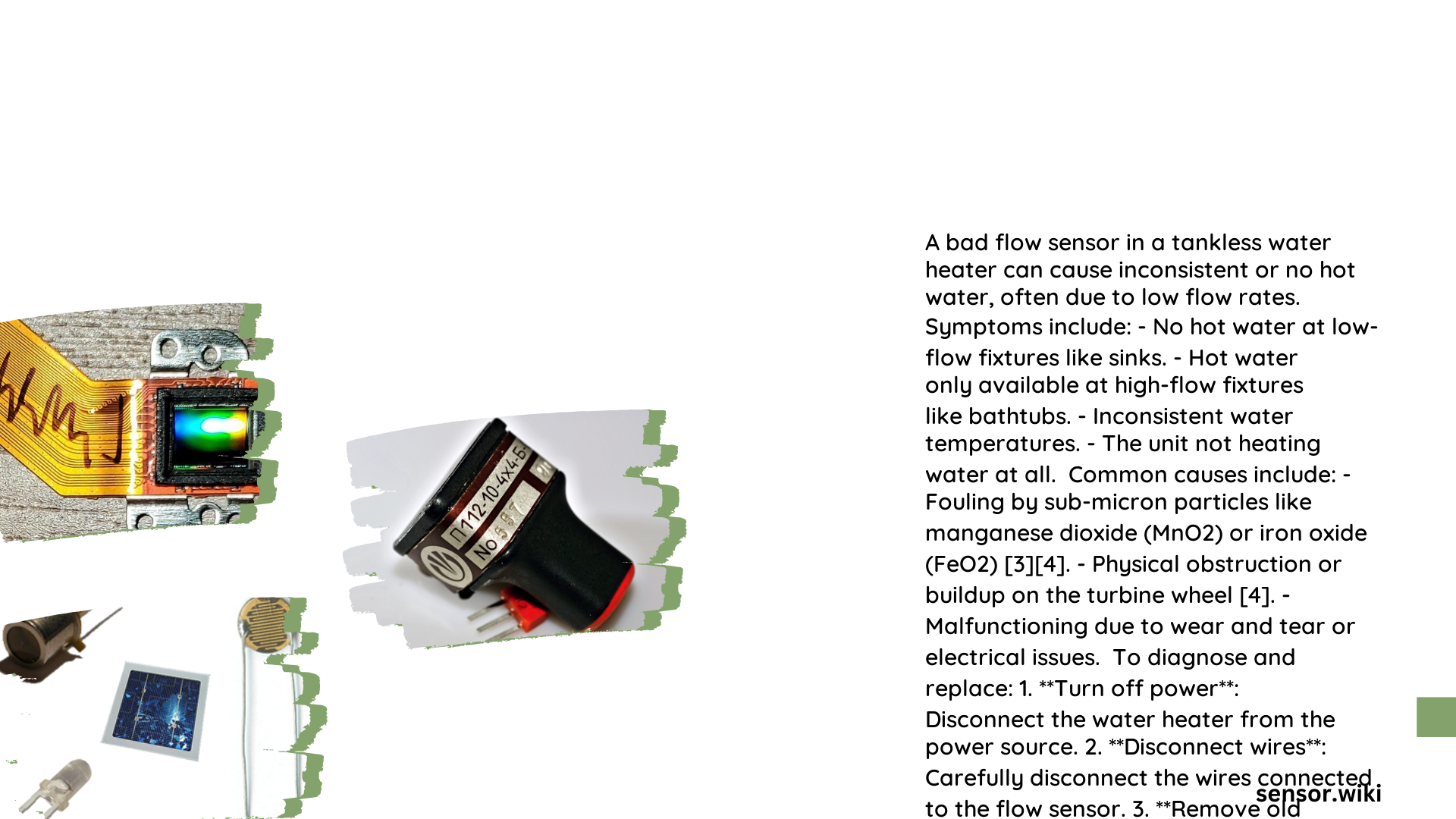A bad flow sensor in a tankless water heater can disrupt your home’s hot water supply, causing unpredictable temperature fluctuations and potential system failures. Understanding the symptoms, diagnostic procedures, and replacement techniques is crucial for maintaining consistent hot water performance and preventing long-term damage to your water heating system.
What Causes Flow Sensor Malfunction in Tankless Water Heaters?
Why Do Flow Sensors Fail?
Flow sensors in tankless water heaters can fail due to multiple reasons:
| Cause | Impact | Probability |
|---|---|---|
| Mineral Buildup | Blocks sensor accuracy | High |
| Electrical Degradation | Interrupts signal transmission | Medium |
| Physical Damage | Prevents proper flow measurement | Low |
What Are the Primary Symptoms of a Bad Flow Sensor?
Temperature Inconsistencies
- Sudden hot and cold water bursts
- Unpredictable water temperature
- Intermittent heating performance
System Response Indicators
- Unexpected system shutdowns
- Error codes on control panel
- Reduced water pressure
How to Diagnose a Faulty Flow Sensor?

Diagnostic Checklist
- Visual Inspection
- Check for visible sensor damage
- Examine electrical connections
-
Look for corrosion or mineral deposits
-
Electrical Testing
- Use multimeter to test sensor resistance
- Verify wire continuity
- Check voltage output
What Tools Do You Need?
- Multimeter
- Adjustable wrench
- Replacement flow sensor
- Screwdriver set
- Owner’s manual
How to Replace a Tankless Water Heater Flow Sensor?
Step-by-Step Replacement Process
- Power Disconnection
- Turn off electrical circuit
- Shut down gas supply
-
Allow system to cool
-
Sensor Removal
- Locate flow sensor near water inlet
- Disconnect electrical connections
-
Unscrew mounting hardware
-
New Sensor Installation
- Clean mounting area
- Install new sensor
- Reconnect electrical connections
- Secure mounting hardware
Cost Considerations
- Replacement sensor: $50-$200
- Professional installation: $150-$350
- DIY complexity: Moderate
What Preventive Measures Can Protect Flow Sensors?
Maintenance Strategies
- Annual professional inspection
- Install water softener
- Use high-quality water filters
- Perform regular system flushing
Warning Signs Requiring Immediate Attention
- Persistent temperature fluctuations
- Frequent system error codes
- Reduced hot water output
- Unusual system noises
Technical Specifications to Consider
Flow Sensor Performance Metrics
- Typical flow rate range: 0.5-5 gallons per minute
- Average sensor lifespan: 5-7 years
- Recommended replacement interval: Every 6-8 years
Expert Recommendations
When to Seek Professional Help
- Complex error codes
- Repeated sensor failures
- Warranty considerations
- Advanced diagnostic needs
Manufacturer Considerations
Different brands have unique flow sensor specifications:
– Rinnai: Proprietary sensor design
– Navien: Advanced flow measurement
– Rheem: Robust sensor construction
Final Insights
A bad flow sensor can significantly impact your tankless water heater’s performance. Regular maintenance, timely diagnostics, and professional guidance can help maintain optimal system functionality and extend equipment lifespan.
Pro Tips
- Always consult manufacturer guidelines
- Keep maintenance records
- Consider professional annual inspections
Reference:
– Tankless Water Heater Maintenance Guide
– Flow Sensor Diagnostic Procedures
– Professional Plumbing Resources
